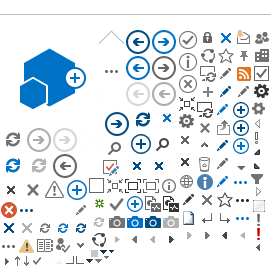Distributed ledger technology and tokenisation applied in financial markets concept

Lyle Horsley
Head of the SARB Fintech Unit
This blog was first published as an article in the BusinessDay news site and can be accessed here:
https://www.businesslive.co.za/bd/opinion/2022-04-13-lyle-horsley-reserve-bank-taps-into-technology-for-financial-markets-concept/
The South African Reserve Bank (SARB) concluded its second proof of concept using tokenisation and distributed ledger technology (DLT). The first, Project Khokha 1 (PK1) was launched in 2018 to trial the use of a DLT based wholesale payments system to replicate certain functions currently performed by the domestic real-time-gross-settlement system, which is operated by the SARB. PK1 created a tokenised form of central bank money that was used to settle interbank payments on a DLT platform, along with the existing system. Project Khokha 2 (PK2) builds on the foundations laid in PK1 by extending the proof of concept to financial markets.
In PK1 the focus was on interbank settlement on DLT, PK2 explores the tokenisation of further assets, including securities, in the trade life cycle. The project focussed on the issuance of a SARB debenture (debt instrument) on DLT as a specific use case and allowing for its trade using two tokenised forms of money. PK2 was set up in a way that explores the tokenisation of securities, and the trading, clearing and settling of tokenised securities on DLT. It also explored the interoperability between different DLT platforms to see whether value can flow from one platform to another in a seamless way, and how DLT may impact existing licensed market infrastructures and regulated activities. It further seeks to consider an approach to regulation and supervision of decentralised networks in the absence of a central intermediary.
PK2 demonstrates that securities can be represented as digital representations of value as a DLT-based token. In this way, ownership of, and trades in the tokenised security, is recorded on a single shared ledger giving multiple stakeholders access to the bookkeeping data via this shared platform. It is markedly different to the current practice where the central securities depository holds the ’single source of truth’ and various intermediaries reconcile their databases against this record of securities ownership. DLTs record important and unique information such as the details of the issuer; the type of security; date of issuance; maturity date of the security; and the interest rate payable on the security. The way DLTs are programmed, this information may be used by so-called ‘smart contracts’ to automate actions surrounding tokenised assets and create efficiencies.
The settlement of the transaction - the process of moving the security to the buyer and the money to the seller - happened on DLT in the project through a dedicated delivery-versus-payment (DvP) contract which allowed for an atomic swap through a series of verification processes. In this way, settlement of two linked obligations using a DvP settlement mechanism is achievable on the platform. PK2 raised interesting insights on the future of money and how value can be transferred on DLT to ensure continued safety and security of payments. PK2 showed that tokenised central bank money, such as a central bank digital currency (CBDC), could be used for wholesale settlement, which is distinguishable from CBDC used for retail use. This form of money was issued specifically for this project for use only on this DLT platform. The project explored the use of central bank money, as the safest and lowest risk asset, for settlement purposes in a potential future DLT-based world. PK2 also looked at privately issued money in the form of a stablecoin issued by the commercial banks for settlement in the secondary market.
The project further explored interoperability between two DLT platforms using a software bridge that allowed for value to be transferred between the two prototypes. Interoperability between DLT networks raised important questions about the safety, security and cyber resilience of the software bridge. These are aspects that require closer regulatory scrutiny if there are multiple DLT platforms set up in the future.
PK2 also showed that several existing functions in the trade life cycle can potentially be performed on a single DLT platform. The law currently makes provision for several centralised infrastructures that serve as an anchor for regulatory and supervisory requirements. A decentralised network that allows multiple access nodes for purposes of validating transactions or building new applications would require different regulatory requirements and different supervisory responses.
While SA’s financial markets have served the country well, there is a need to evolve and innovate. As a central bank, we are exploring potential efficiencies, benefits and risks that new technology can introduce. These potential efficiencies include increased transparency in the holding of securities; reduction in costs due to automation and removal of manual, multiple reconciliation processes. However, these potential benefits also introduce potential risks. The first being that the legal and regulatory framework for financial markets was not designed for trading, clearing and settlement in a DLT-based environment. The application of DLT to financial market activity should thus not only focus on the technology and what it enables. We must assess the application of the technology within an appropriate legal framework to ensure that the policy and legal frameworks to DLT adoption is sound and robust. Project Khokha 2 is a continuation of a process at the SARB to respond to the technological advancements in central banking. And, further analysis, discussion and collaboration with industry, policymakers and financial sector regulators will be ongoing.
 Disclaimer: As the IFWG we are enthusiastic to include diverse voices through our media content. The opinions of participants do not necessarily represent the views of the IFWG and their respective organisations.
Disclaimer: As the IFWG we are enthusiastic to include diverse voices through our media content. The opinions of participants do not necessarily represent the views of the IFWG and their respective organisations.
